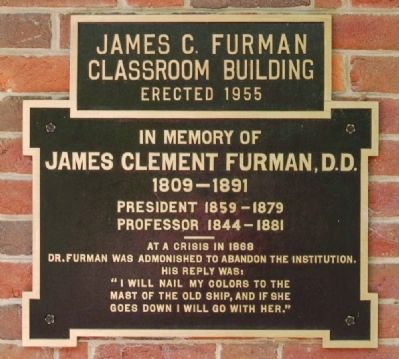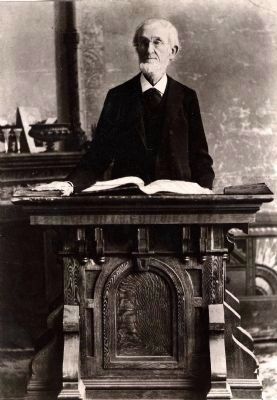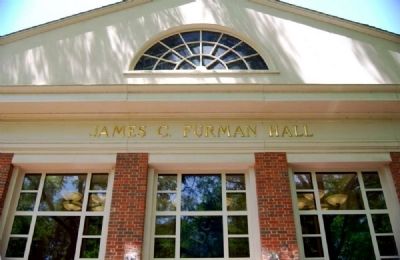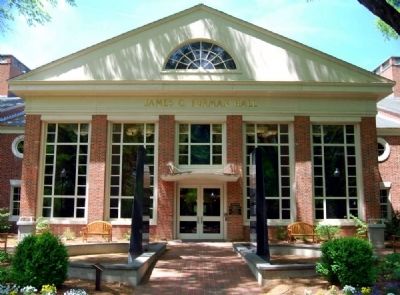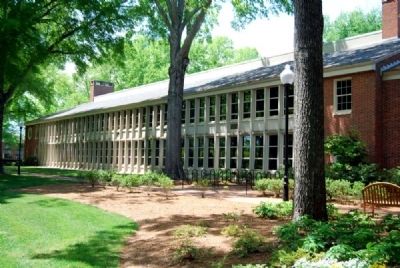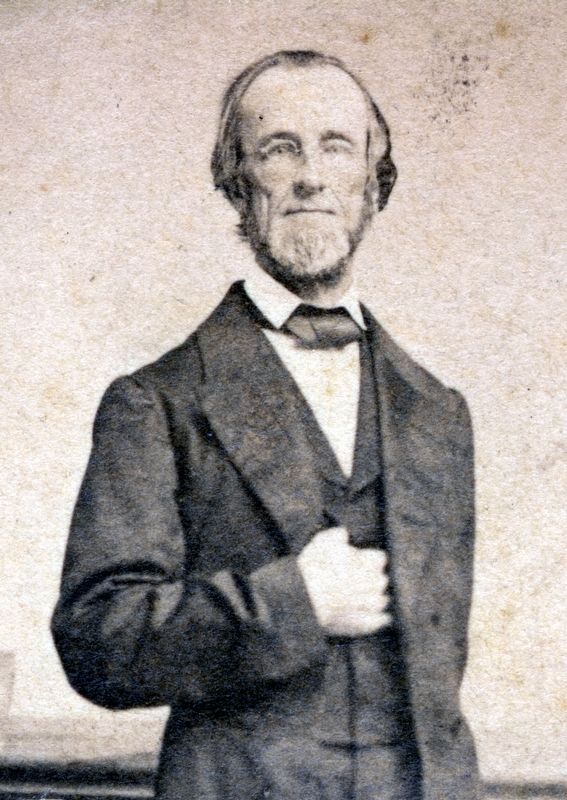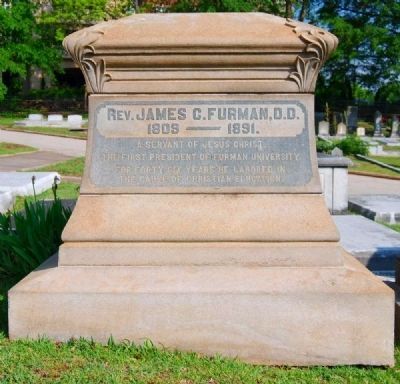Greenville in Greenville County, South Carolina — The American South (South Atlantic)
James C. Furman Classroom Building
Erected 1955
James Clement Furman, D.D.
1809-1891
President 1859-1879
Professor 1844-1881
-----
At a crisis in 1868
Furman was admonished to abandon the institution.
His reply was:
"I will nail my colors to the
mast of the old ship, and if she
goes down I will go with her."
Topics. This historical marker is listed in these topic lists: Churches & Religion • Education. A significant historical year for this entry is 1868.
Location. 34° 55.483′ N, 82° 26.2′ W. Marker is in Greenville, South Carolina, in Greenville County. Marker is located on the east side of the building, on the campus of Furman University. Touch for map. Marker is in this post office area: Greenville SC 29617, United States of America. Touch for directions.
Other nearby markers. At least 8 other markers are within walking distance of this marker. Furman Class of '05 September 11 Memorial (within shouting distance of this marker); Alester G. Furman, Jr. Administration Building (within shouting distance of this marker); John E. Johns Hall (within shouting distance of this marker); John E. Johns '47 (about 300 feet away, measured in a direct line); Alester Garden Furman, Jr. (about 300 feet away); The Earle Infirmary (about 400 feet away); Elizabeth Lyles Blackwell Fountain (about 400 feet away); Beatrice Dennis Plyler Fountain (about 500 feet away). Touch for a list and map of all markers in Greenville.
More about this marker. The plaque honoring James C. Furman for his sacrificial devotion was transferred from the old James C. Furman Hall of Science on the downtown campus in 1958 to the new James C. Furman Classroom Building on the new campus. In 2020, the building was rededicated as Furman Hall and a new plaque was unveiled. The plaque acknowledges that while James C. Furman, the university's first president and the son of its namesake, worked to build and save the university in difficult times following the Civil War, he was also a vocal proponent of slavery and secession. The old plaque is now in Special Collections and Archives.
The building's new name, which removes "James C.," was unanimously approved by the Furman University Board of Trustees May 2019, based on one of the recommendations from the "Seeking Abraham" report. The name and plaque honor the entire Furman family, celebrating and noting the diverse community of students, faculty, staff, alumni and friends who study, work and gather on the campus.
Also see . . . Furman University. Official website of Furman University. (Submitted on May 14, 2009, by Brian Scott of Anderson, South Carolina.)
Additional commentary.
1. About James Clement Furman
Born in Charleston, James Furman’s legacy is the service and devotion he gave to his namesake university, which is actually named for his father, Dr. Richard Furman, a Baptist minister and denominational leader. The junior Furman began his tenure as a member of the Furman University faculty while it was still located north of Columbia in Fairfield. He would, working with members of the school’s board of trustees, campaign over the next six years to persuade the state Baptist Convention to move the school to Greenville, where it eventually opened in 1851 in McBee Hall. He would go on to become chairman of the faculty and later president of the university.
Furman, an ardent states’ rights supporter, was heavily involved in politics, as well. In 1860, he secured an appointment as one of the Greenville delegates to attend the Secession Convention, a meeting that would eventually lead South Carolina to become the first Southern state to secede from the Union. On December 20, 1860, Furman was one of the signers of the Ordinance of Secession. (Source: G: The Magazine of Greenville, Jan/Feb 09 pg 70.)
— Submitted May 14, 2009, by Brian Scott of Anderson, South Carolina.
2. James Clement Furman: History in Brief
At a Glance James Furman became an influential political figure in the community and a leader at Furman University, a school that his father, Dr. Richard Furman, worked to found.
Claim to Fame Furman is best known for his efforts to have Furman University moved from Fairfield, South Carolina, to Greenville in 1851, where it opened in McBee Hall on the corner of Main Street and McBee Avenue. He was chairman of the faculty before later becoming president.
Did You Know? Furman University closed during the Civil War, so Furman became president of the Greenville Women’s College instead. Initial efforts to reopen the school after the war’s conclusion were unsuccessful, but Furman was quoted as saying, “I have resolved, if the university should go down, to sink with it.”
An Impressive Eulogy At an 1870 commemoration of the death of Confederate General Robert E. Lee, Furman was a featured speaker. (Source: G: The Magazine of Greenville, Jan/Feb 09, pg 70.)
— Submitted May 14, 2009, by Brian Scott of Anderson, South Carolina.
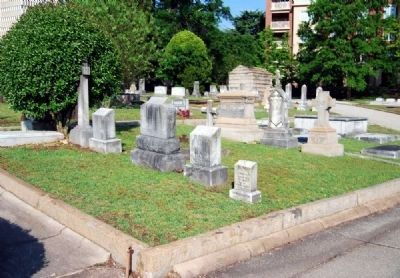
Photographed By Brian Scott, May 9, 2009
6. Furman University Plot -
Springwood Cemetery, Greenville SC
Springwood Cemetery, Greenville SC
Furman purchased 84 plots in 1868. Notables buried in the plot are Charles Judson (first professor hired by Furman University when the school moved to Greenville and the 12th President of the Greenville Female College), Mary Camilla Judson (the principal of the female college), James Clement Furman (first President of Furman University), James C. Furman II, M.D., and later Furman presidents Edwin Poteat and Dr. W.J. McGlothlin.
Credits. This page was last revised on November 5, 2022. It was originally submitted on May 14, 2009, by Brian Scott of Anderson, South Carolina. This page has been viewed 935 times since then and 16 times this year. Last updated on November 4, 2022, by Julia Cowart of Greenville, South Carolina. Photos: 1, 2, 3, 4, 5. submitted on May 14, 2009, by Brian Scott of Anderson, South Carolina. 6. submitted on May 17, 2009, by Brian Scott of Anderson, South Carolina. 7. submitted on November 4, 2022, by Julia Cowart of Greenville, South Carolina. 8. submitted on May 17, 2009, by Brian Scott of Anderson, South Carolina. • Bernard Fisher was the editor who published this page.
